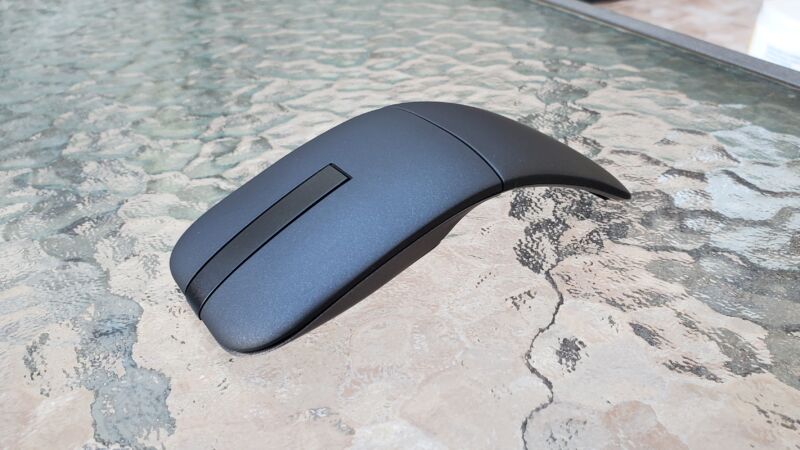
| Specs at a glance: Dell MS700 Bluetooth Travel Mouse | |||
|---|---|---|---|
| Sensor | Optical LED | ||
| Connectivity options | Bluetooth 5.0 | ||
| Programmable buttons | 0 | ||
| Onboard profiles | 0 | ||
| Lighting | None | ||
| Size | 4.59×2.25×1.17 inches (116.49×57.17×29.79 mm) |
||
| Weight | 2.01 ounces (56.9 g) |
||
| Warranty | 3 years | ||
| Price (MSRP) | $65 | ||
There's something to be said about a portable PC peripheral. With many people working in various locations and pairing PC accessories with various devices, portability has become a necessity for many. The Dell MS700 Bluetooth Travel Mouse released today prioritizes portability with Bluetooth connectivity and, more interestingly, the ability to twist into a flatter shape.
The twisted mouse is similar to mice like Microsoft's bendable Surface Arc but stands out with its ability to easily toggle across multiple paired devices, plus a cozy texture. But these are about the only enjoyable things about using the MS700.
Dell's MS700 felt scratchy when I moved it around or made extended swipes, and the touch-scroll strip is an inadequate replacement for a scroll wheel. And there are very few customization options with this $65 (MSRP) mouse.
The MS700's twisty parlor trick means it's easy to take with you, but subpar performance means you won't want to.
Table of Contents
Portability with a twist
In a unique twist, the bottom half of the MS700 (as denoted by the stern line running horizontally across the mouse) can rotate 180 degrees. Then, the mouse is no longer arched like a rainbow but, instead, looks like a slimmer, squiggly line.
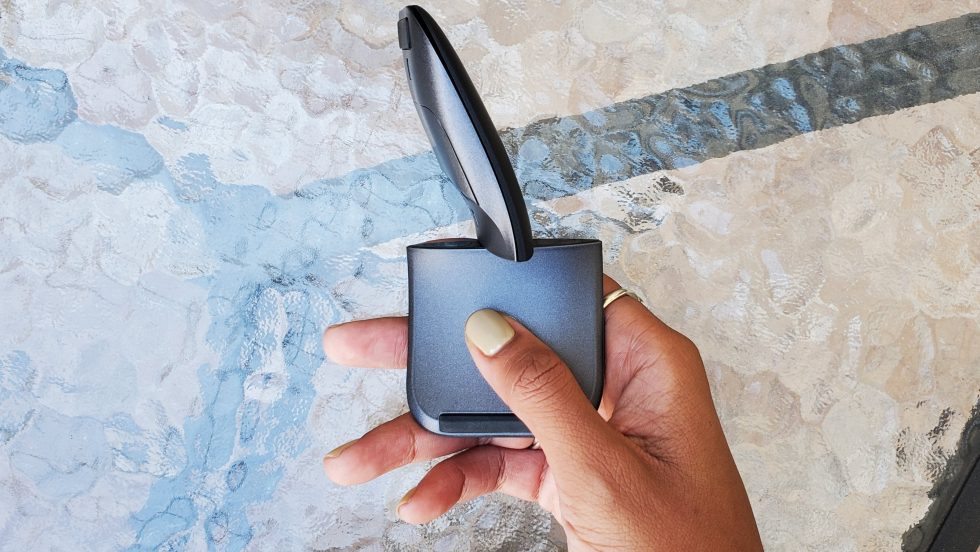
The mouse is just 1.17 inches thick and 0.13 pounds, so it was remarkably easy to carry around, whether that was in my purse or on a stack of devices as I moved from one room in my home to another.
Once twisted, the mouse isn't just easier to stow; it turns off, too. That made it much easier than most other wireless peripherals I have (san some RGB options) to tell if it was on or not. Most of my wireless peripherals are left on for countless hours overnight, but I would notice if the MS700 was left on and was happy to twist it otherwise.
The MS700's adjustable shape is blatantly similar to Microsoft's long-running Arc series of mice and comparable designs, like Lenovo's Yoga Mouse. The Arc and Yoga also have arched shapes when in use but can bend to lie flat. Their flatter stature makes them seem easier to slip into a narrow compartment or pocket than the MS700's curvier design.
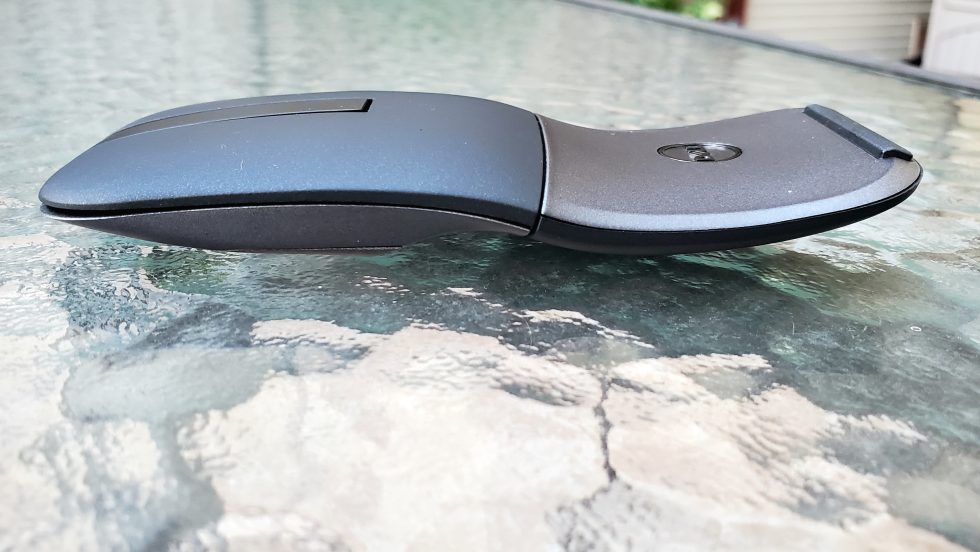
Without all three mice in hand, it's hard to say which mechanism is better for long-term use. The twisting mechanism in the MS700 feels secure, though. During my time with it, the mouse would stay in position even if not twisted all the way. It also takes a healthy amount of force to initiate twisting, and there's an assuring sound when the mouse locks into a completely twisted position.
For comparison, when reviewing the Surface Arc, Rtings.com wrote that "the clipping mechanism used to lock the mouse into a flat or arched shape feels well-built, but the latex material that covers the back portion of the mouse could be more susceptible to wear-and-tear." MS700 doesn't have to worry about its chassis wearing away from friction, but there are moving parts inside that could degrade over time.
For what it's worth, Dell's mouse has a three-year warranty, and the Surface Arc and Yoga mice have one-year warranties.
Comfort and productivity
There are wireless mice that you can tell were built for long hours of serious work. The Logitech MX Master 3S, with its large hump for resting the palm and multiple side buttons, is a favorite such example. Dell's MS700, on the other hand, gets a point for being ambidextrous, but it puts portability over everything else. After a few days of using the peripheral, I never got used to swiping or scrolling with it.
The No. 1 problem? Scratchy swiping. When using the MS700, a narrow rectangle at the northern and southern end of the mouse's underside is all that touches the surface beneath it. Where some mice, especially gaming ones that tout fast gliding, use PTFE feet to make movements feel smoother, the MS700 has a plastic, rougher strip serving as a foot. Both parts of the mouse touching the mouse pad would make scratchy sounds and feels as I moved it. Large swipes were particularly audible. I even tried using the mouse with multiple mouse pads and surfaces, but the issue persisted.
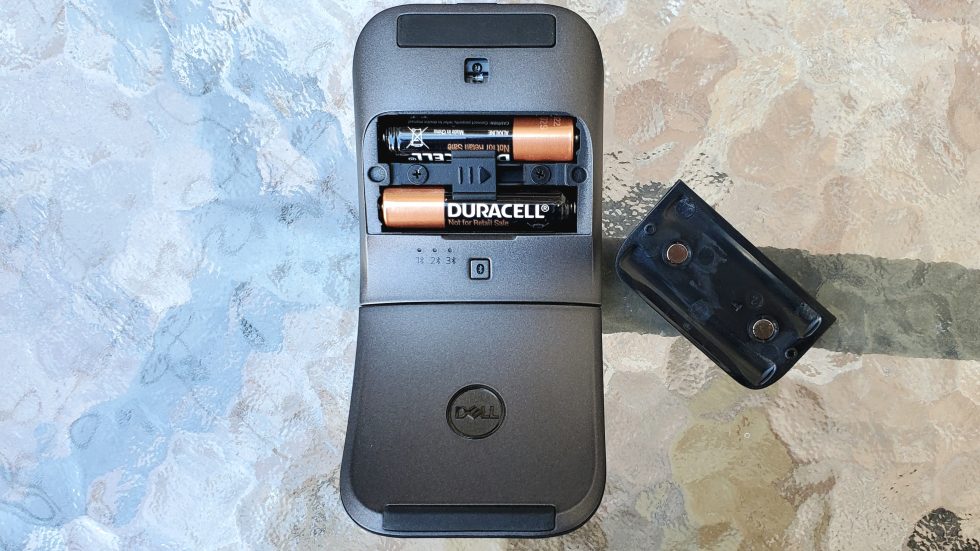
The MS700 is impressively lightweight for travel (0.13 lb), but in contrast to the Logitech G705, it wasn't easy to move around rapidly to do large swipes across my high-resolution monitor. Nor was it easy to even make tiny, precise movements because of that off-putting friction.
Ideally, a mouse (or any PC peripheral) doesn't get in the way of your productivity. That's why you see vendors frequently use phrases like 'an extension of your hand' to promote their products. There's another reason the MS700 never felt like a part of my hand: its touch-scroll. There's no scroll wheel for my pointer finger to quickly feel out, and I sometimes had to look down at the mouse to get the perfect finger placement for scrolling.
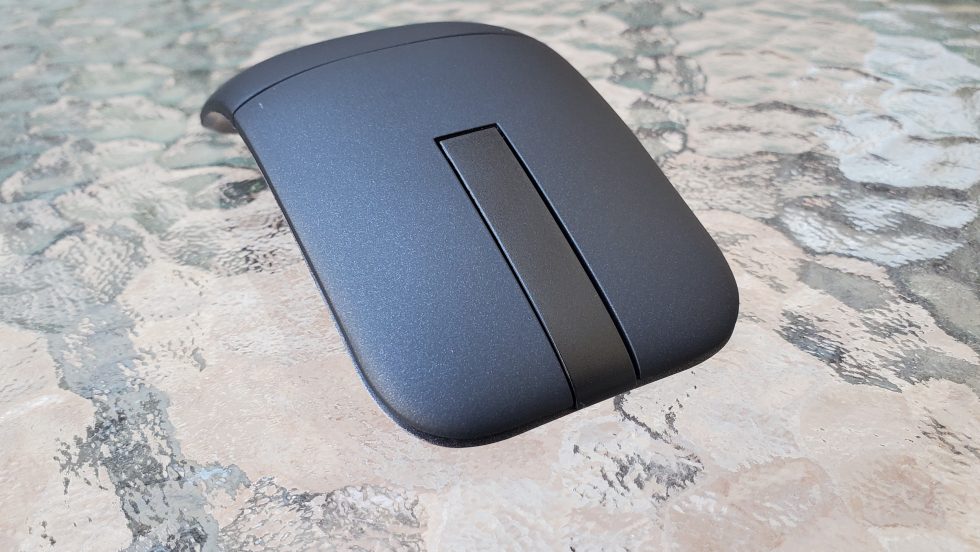
I couldn't scroll rapidly through long spreadsheets or endless newsfeeds with the MS700, making me miss the speedy scroll wheel in the MX Master 3S. There's also no scroll-wheel input with this mouse. And occasionally, scroll movements were slightly off from what I intended. The touch-scroll could be more responsive, but I am getting more used to it the more I use the mouse.
Microsoft's Surface Arc also has a non-wheel for scrolling; however, it also allows horizontal scrolling. You can't horizontally scroll with Dell's MS700.
The MS700 does have good texture, though. It feels like a soft rubber that provides a better grip than smoother, cheaper-feeling plastic chassis.
The left- and right-click buttons are also well-placed for intuitive use. They have enough tactility to be reliable and comfortable; although, if I were being picky, I'd request a bit more travel.
The MS700 only has left- and right-click buttons, so it won't be a good fit for power users who enjoy using a mouse with advanced features, like programmability, profiles to save different settings, or even side buttons.
The MS700's optical sensor supports up to 4,000 DPI (dots per inch, see our PC mouse terms explainer for more). You can set it to 1,000, 1,600, or 2,400, too, but you have to download Dell's Peripheral Manager software. Many mice have a button for toggling DPI settings without downloading any app, and some let you enter a specific DPI number. The MS700 is limited when it comes to sensor adjustments.
Wireless features
The MS700 was easy to use across my bounty of computing hardware, thanks to the button on the underside that lets you toggle across three paired devices. Multiple Bluetooth profiles are a feature that's becoming more common among wireless keyboards in this price range. The Surface Arc, which came out in 2017, only has one Bluetooth profile, as does Lenovo's Yoga Mouse and Logitech's Signature M650, another smaller, portable mouse that can suit lefties. However, those three comparison mice also have dongles, which makes it easy to keep them connected with two devices.
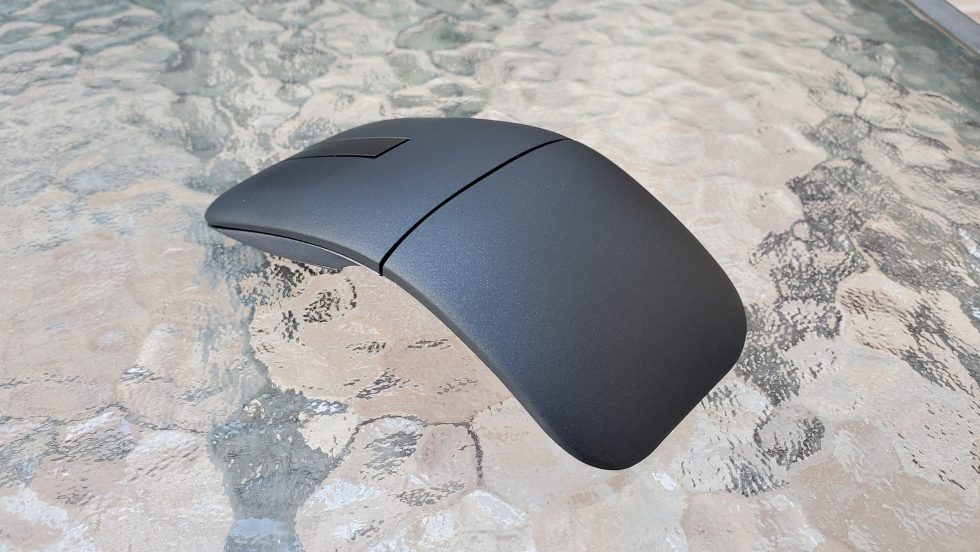
The MS700 still lets me pair with more devices; however, some prefer the simplicity of a USB dongle. You can also expect less lag with a dongle connection than a Bluetooth one, but I didn't notice any obvious lag while using the MS700 alongside a wireless keyboard, and this isn't the type of mouse you should try to use with a competitive PC gaming setup anyway.
Battery life
Dell claims the MS700 can last for up to 24 months before needing new AAA batteries. That's four times longer than the Surface Arc's claim (six months), longer than the Yoga Mouse (two months), and equal to Logitech's claim for the M650.
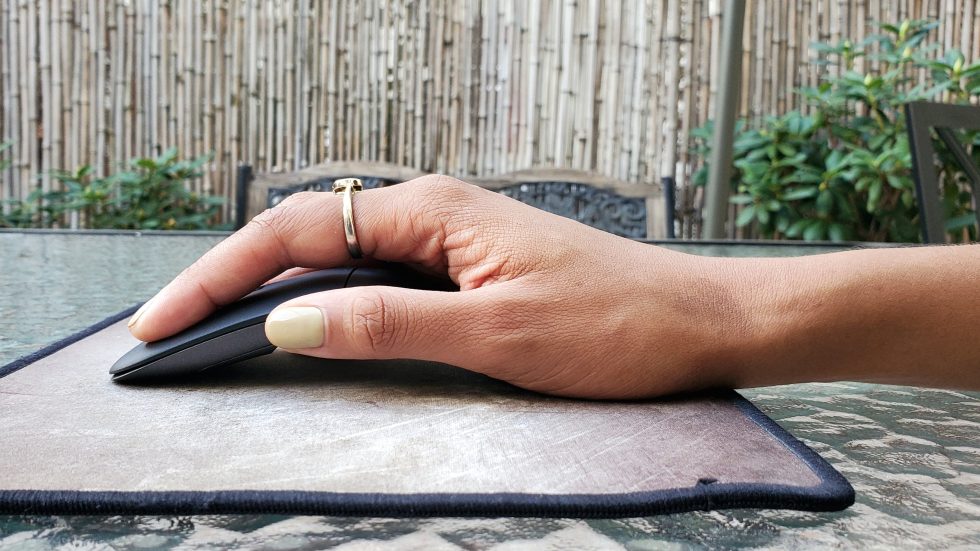
Like many other wireless mice in its price class, the MS700 isn't rechargeable; (although, you could pack it with rechargeable batteries). That's a shame because with USB-C taking over the world, it has become easier to rely on cables to charge peripherals, even when you suddenly run out of juice in the middle of the night while staying in a hotel. But, admittedly, it's still also pretty easy to grab a pair of AAA batteries for the mouse every couple of years.
One-trick pony
Dell's MS700 Bluetooth Travel Mouse is extremely portable, but that's pretty much the best thing about it. The scratchy feeling I endured as I moved the mouse around really made it unrealistic for serious, long-term productivity. And matters are only made worse by the hard-to-find touch-scroll strip, which isn't nearly as responsive as a traditional wheel.
The portability part, however, the MS700 nails. Its twisting mechanism is clever and feels sturdy. A longer warranty makes me feel even better about that.
The mouse is also easy to keep paired with up to three devices of various OSes. And with tactile buttons, the mouse was sufficient for simpler tasks, like browsing the web.
There aren't enough perks to elevate the MS700 to much more than a mere 'travel mouse.' Yes, there are more expensive wireless mice, but $65 is pretty steep for something that's best reserved as a backup mouse for when you want to catch up on emails on the go. With more comfortable, programmable, and decently portable mice like Logitech's Signature M650 going for $40, the MS700's debuting MSRP is a hard sell.
The good
- Twist mechanism feels sturdy and reliable and makes an already portable mouse even easier to travel with
- Soft texture with decent grip
- Easy to use with up to three devices
- One of the rare ambidextrous wireless mice
The bad
- Touch-scroll doesn't feel intuitive and could be more responsive
- Non-rechargeable
- Bluetooth only: no dongle or cable
The ugly
- Mouse movements feel and sound scratchy
Ars Technica may earn compensation for sales from links on this post through affiliate programs.
https://ift.tt/pkBsGnf
Tidak ada komentar:
Posting Komentar